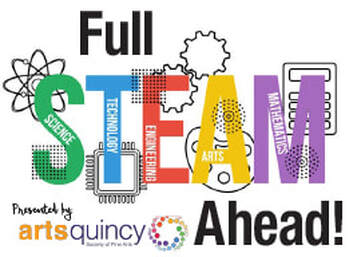 Did you know we have a historical site right in our back yard along the Mississippi River? Quinissippi Island, located across from Quincy Park District off of the Quincy bay, has over the years been the location for many attractions. This Island has been the home for an animal zoo, a steam locomotive, a Ferris Wheel, and even a cable car that would take you over the Quincy Bay. Today, Quinissippi Island is the home of a marina for boat enthusiasts, and a playground and picnic area for family get togethers. What you may not know is that Quinissippi Island is home to a local setting, a Lincoln-era village complete with log cabins and other historical buildings. The Lincoln-era village is located in the middle of Quinsippi Island near the playground. This cabin village consists of three log cabins with another one waiting to be reassembled, an herb garden, a stone smoke house, a log corn crib, and a log church. Built in the late 1960’s and early 1970’s, this village was designed to give the people of today a glimpse of what life was like in the time of Lincoln.
0 Comments
Is it a liquid or is it a solid? Oobleck!
Thank you Paige and Gavin Schumacher for providing this fun activity! Paige is 17 and a junior at QHS. Gavin is 14 and a freshman at QHS. It’s sometimes difficult for my brother to agree with me on a project, but we’ve always loved doing an activity that mixes art, science, books and a mess! You may have heard about oobleck in science, but we first read about it in Dr. Seuss’s book Bartholomew and the Oobleck. In the story, the king wants something new to happen. The result, a magician makes oobleck fall from the sky and it’s impossible to remove (except through the power of a sincere apology, of course.) While not magical, this homemade oobleck is even more amazing. This project is fun for families of all ages and clean-up is just hot water and a rag! So, get to making your own oobleck! Ideas for you and your family to incorporate science, technology, engineering, arts and math in your home! Follow along as we give you step-by-step directions on how to make your own terrarium. You’ll find additional resources to make a lesson plan for students of all ages at the end of this article! Thank you Megan Duesterhaus-AuBuchon for providing this fun activity.
Terrarium facts & tips: Terrariums are a fantastic option for a low maintenance, primarily self-sustaining indoor planter. In a closed system, the water inside the container will continuously evaporate and water the plants each time. Additionally, dead growth from the plants provides a food source. Closed containers are best for plants that thrive in high humidity. If your terrarium is going to utilize succulents, it’s best to leave the container open. Activated charcoal keeps water fresh and keeps bacterial growth under control. In a closed container, it keeps the terrarium from becoming foul smelling. You can use any plants that grow well in a small space and can manage high humidity and temperature changes. It is even possible to source plants from your yard – including “weeds.” Choose plants small enough to fit in the container without touching the sides.  Children love blowing bubbles. Even older children enjoy getting in on bubble fun! Follow along as we give you step-by-step directions on how to make your own homemade bubble mixture. You’ll find additional resources to make a lesson plan for students of all ages at the end of this post!  Ideas for you and your family to incorporate science, technology, engineering, arts and math in your home! Welcome to our STEAM lesson from Arts Quincy! We’re going to bring you a fun family project that’s adaptable for all ages and can bring STEAM education right into your living room. Today’s project is Create Your Own Weather Studio, and with the spring time weather blooming all around, it’s a fun time of year to take a closer look at the outdoors. |
Archives
June 2024
Categories |

 RSS Feed
RSS Feed
